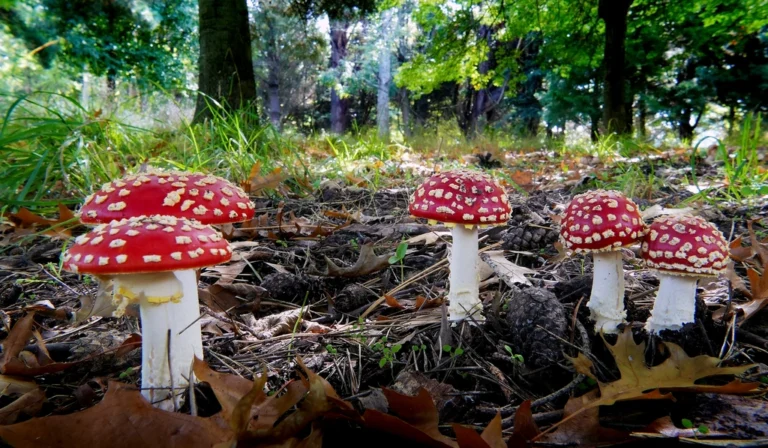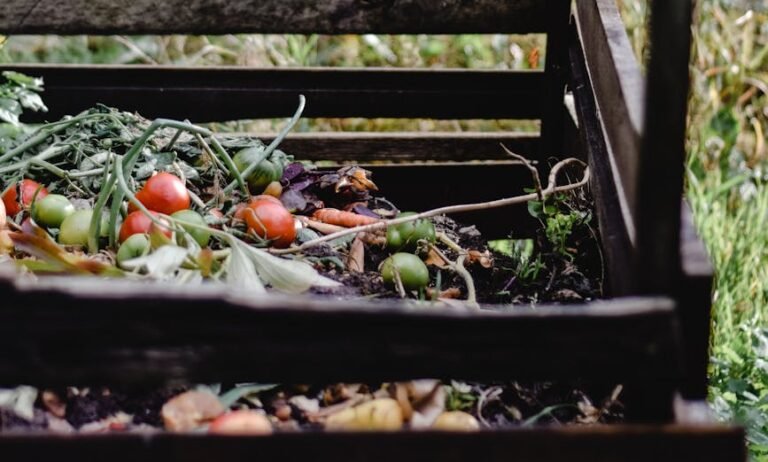Understanding Garden Zones
Garden zones play a pivotal role in the organization and success of any gardening endeavor. These specific areas within your garden are designed to serve distinct functions, accommodating various crops and plants to thrive according to their unique needs. The foundation of creating effective garden zones starts with a thorough assessment of your garden space. This involves evaluating factors such as sun exposure, soil quality, and available moisture, which are crucial for determining what can grow successfully in each area.
Identifying the sun’s patterns throughout the day will enable you to establish zones that are best suited for sun-loving vegetables like tomatoes and peppers, while shadier areas can be optimized for leafy greens or flowers that flourish with less direct sunlight. Soil quality, which varies across different locations in your garden, informs decisions on which crops are best planted where. Conducting a soil test can help you understand nutrient levels and pH, guiding the placement of plants that require similar soil conditions.
Furthermore, integrating water availability into your zoning strategy is essential, as plants with higher moisture needs should be placed closer to water sources or within areas that naturally retain moisture. Common types of zones include vegetable patches, where you grow edible crops; flower beds, which enhance aesthetics and attract pollinators; and relaxation areas, designed for respite and enjoyment amidst the greenery. By thoughtfully planning these spaces, gardeners can create an inviting atmosphere that promotes both productivity and leisure.
To effectively measure and map out these zones, consider utilizing garden design tools or creating a simple sketch of your space. Outline each zone’s dimensions on paper while noting the characteristics of each area, such as sunlight exposure and soil type. This strategic planning will not only maximize the potential of your garden but also ensure that each zone is a harmonious component of your overall garden oasis.
Understanding the Permaculture Zone System
Permaculture isn’t just a catchphrase; it’s a sophisticated approach to ecological design that emphasizes sustainability and efficiency. At the core of this methodology lies the permaculture zone system, which organizes interactions between elements based on proximity and importance. With careful planning, you can create a thriving ecosystem right outside your door!
Exploring the Different Zones
The zone system comprises five distinct areas, each serving a unique purpose:
- Zone 1: This is the heart of your garden, located closest to your home. Here, you’ll place high-maintenance plants like herbs and salad greens for easy access.
- Zone 2: Slightly further out, this zone hosts crops that need less frequent attention, like vegetables and berries.
- Zone 3: The semi-managed zone where larger crops, like grains and some fruit trees, are grown.
- Zone 4: This zone acts as a forest garden, almost experimental, with minimal management required.
- Zone 5: Finally, zone five is a wild space that’s often left untouched, allowing nature to thrive and supporting local biodiversity.
Applying the Zones Effectively
Utilizing the permaculture zone system means considering your lifestyle and resources. By placing zones wisely, you promote not only self-sufficiency but also community interaction and wildlife support. Remember, permaculture is about working with nature, and by leveraging the unique characteristics of each zone, you can create a rich tapestry of interdependent life.

Implementing Plant Guilds
Plant guilds represent a strategic approach to garden planning that involves grouping compatible plants to create a thriving ecosystem. This idea rests on the principles of companion planting, where certain plants work in tandem to promote healthy growth, deter pests, and attract beneficial insects. By understanding these relationships, gardeners can cultivate a more resilient garden filled with diverse and harmonious plant life.
An exemplary illustration of effective plant guilds is the ‘Four Sisters’ method, which traditionally consists of corn, beans, squash, and rocky mountain bee plant. In this guild, the tall corn provides support for the climbing beans, the beans enhance soil nitrogen levels, benefiting the corn and squash, and the bee plant attracts beneficial insects and provides food. The sprawling squash plants act as a living mulch, suppressing weeds and maintaining soil moisture. This dynamic quatro not only maximizes space but also fosters a symbiotic relationship that is beneficial to all members of the guild.
When selecting plants for guilds, it is crucial to consider the specific garden zones in which they will grow. Each zone has unique climatic conditions, soil types, and water requirements, which must be aligned with the plants chosen for the guild. For example, in a Mediterranean climate, herbs such as rosemary and thyme can be paired with drought-resistant plants like succulents, creating a guild that thrives on minimal water and enhances flavor and aroma in the garden. Alternatively, in cooler climates, combining cold-hardy vegetables like kale with well-draining perennials can foster a robust guild suited to withstand frost.
In integrating various plants into guilds, it is essential to use a thoughtful approach, ensuring that each plant selected not only serves a function but complements the others. By utilizing plant guilds and their principles, gardens transform into more sustainable spaces, where biodiversity flourishes, and the resilience of the ecosystem is enhanced.

Layering: Creating a Multi-Dimensional Garden
Layering is a fundamental aspect of garden design that involves arranging plants in vertical zones. This method not only enhances visual appeal but also promotes biodiversity and sustainability within the ecosystem. In a well-layered garden, plants are organized into distinct tiers: ground cover, herbaceous plants, shrubs, and trees. Each layer plays a vital role in creating a balanced environment that supports various forms of wildlife and plant life.
The ground layer typically consists of low-growing plants and ground covers, which help suppress weeds, retain moisture, and prevent soil erosion. These plants are essential for maintaining soil health and creating a solid foundation for the layers above. Next, the herbaceous layer is made up of flowering plants and perennial herbs that can provide habitat and food for beneficial insects. By incorporating blooms that attract pollinators, gardeners can enhance biodiversity and contribute to a thriving ecosystem.
Above this is the shrub layer, which provides a habitat for small birds and other wildlife. Shrubs can act as windbreaks and contribute to a layered canopy that protects lower plants from harsh environmental conditions. The tree layer is the highest tier, often composed of native trees that provide shade, habitat, and food for a variety of species. This vertical arrangement allows for increased light penetration and air circulation, which can improve overall plant health and resilience.
Moreover, layering contributes to the creation of microclimates. Different plant heights and structures can influence temperature and humidity levels in specific areas of the garden, creating cooler spots and shaded areas that benefit various plant types. Additionally, by fostering a diverse ecosystem, gardens with multiple layers can effectively improve air and water flow, ensuring all plants receive the resources they require to thrive. Ultimately, implementing a layered approach can transform an ordinary garden into a vibrant oasis that supports both nature and beauty.
Mastering the Art of Permaculture: Applying the 7 Layers of Design
Understanding Permaculture Layers
Permaculture is not just a gardening technique; it’s a holistic approach to design that mimics the natural ecosystems found in diverse landscapes. At the heart of this philosophy lies the concept of layering. By understanding and applying the seven layers of permaculture design, you can create a thriving ecosystem that optimizes space, resources, and productivity.
The Seven Layers Explained
The foundational layers of permaculture include the following:
- Canopy Layer: The tallest trees that provide shade and habitat.
- Sub-Canopy Layer: Smaller trees that thrive in the shade of the canopy.
- Understory Layer: Plants such as shrubs and shade-tolerant herbs.
- Ground Cover Layer: Low-growing plants that prevent erosion and suppress weeds.
- Root Layer: Root vegetables that feed both the soil and your family.
- Soil Layer: Enriching compost and healthy microorganisms that maintain soil fertility.
- Vertical Layer: Climbing plants like beans and cucumbers that utilize vertical space.
Applying the Layers in Your Garden
To implement these layers effectively, start with planning. Assess your space and sunlight exposure to strategically position each layer. By layering these plants, you not only maximize productivity but also enhance biodiversity. A diverse ecosystem is a resilient ecosystem, helping to manage pests naturally and maintain soil health.
So get gardening, and let nature do its magic! By applying all seven layers of permaculture design, you’ll unlock a sustainable path towards a flourishing garden. Happy gardening!

Bringing it All Together: Designing Your Garden Plan
Creating a successful garden requires a systematic approach that incorporates the principles of zones, guilds, and layers. Begin by determining the specific zones of your garden, which will influence light, soil, and water availability. Understanding these zones—such as sunny, shady, dry, and wet—will inform your plant selection, ensuring that each species thrives in its designated space. Identify the microclimates within your property and take note of how they can affect growth patterns.
Next, apply the concept of guilds, where you group mutually beneficial plants together. Select a variety of species that fulfill different roles, such as nitrogen-fixing legumes, dynamic accumulators that bring nutrients to the soil, and pest-repelling herbs. Building these guilds will enhance biodiversity in your garden and promote a more resilient ecosystem, as plants work symbiotically to improve soil health and deter pests.
Once you have established zones and guilds, it is time to implement layers into your design. Think vertically when planning your garden layout—incorporate tall plants, shrubs, and ground covers. This layering technique not only maximizes space but also allows for better light penetration and air circulation. Create an attractive and functional design by plotting the heights and colors of various plants to create a harmonious landscape that suits your aesthetic preferences.
As you draft your garden plan, consider seasonal adjustments and maintenance. Schedule regular evaluations of your plant growth and adapt your layout as needed. Embrace the dynamic nature of gardening by allowing flexibility in your design to accommodate changes in weather or plant vigor. Finally, be prepared to take notes and refine your approach as you learn what works best for your garden oasis. By combining zoning, guilds, and layering, you will be well on your way to cultivating a thriving, year-round haven.
If you enjoy our content, please consider donating here:




